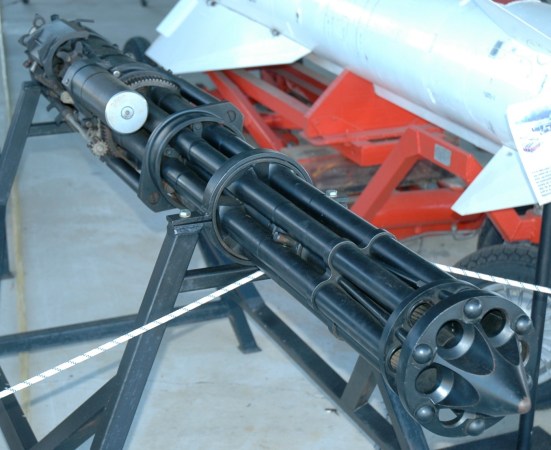In the world of art, frescos are paintings done on walls or ceilings as the plaster sets. In the world of aeronautics, a “Fresco” is a Soviet-made, high-subsonic fighter that could beautifully carve and sculpt the skies.
However, most of these planes ended up looking a lot more like a Jackson Pollock than an ancient Roman masterpiece.
We’re talking about the Mikoyan-Gurevich MiG-17, which had the NATO code name “Fresco.” The MiG-17 first took flight in January 1950 and entered service in 1953, a tad too late to take part in the Korean War. Once development was finished and the MiG-17 was ready for its introduction, the Soviet Union quickly put a halt to all MiG-15 production — likely because the MiG-15 got its ass kicked at MiG Alley.

A lot of MiG-17s have appeared in gun-camera footage from American and Israeli fighters.
(USAF)
The MiG-17 had a top speed of 711 miles per hour and a maximum range of 1,230 miles. The MiG-17 found some success in the Vietnam War despite being considered obsolete by time it saw combat and using guns as primary armaments (either two 23mm and one 37mm gun or three 23mm guns) in the era of rockets — likely because, after Korea, the United States became overly reliant on missiles.
However, according to a compilation by the Air Force Association, during the Vietnam War, the Air Force shot down 61 MiG-17s while the Navy and Marine Corps shot down 39 more. The North Vietnamese, using Soviet aircraft, shot down a grand total of 83 planes in air-to-air combat.

The last moments of a MiG-17 Fresco as a F-105 tears it apart with 20mm cannon fire.
(USAF)
In the skies over the Middle East, the story was very different. The Israeli Air Force destroyed a lot of MiG-17s during the Six-Day War. In a 1970 incident, two MiG-17s accidentally landed at an Israeli airstrip. These planes eventually found their way to the Nevada desert, where the Air Force put them through their paces. As a result, several MiG-17s ended up getting involve, in a way, in modern art: They were splattered apart to degree of which Pollock would be proud by American and Israeli planes.
The MiG-17 hung on after Vietnam and the Yom Kippur War. Currently, the North Korean Air Force operates about 100 of the Chinese copy of this plane, the Shenyang J-5/F-5.
Learn more about this plane in the video below!


















